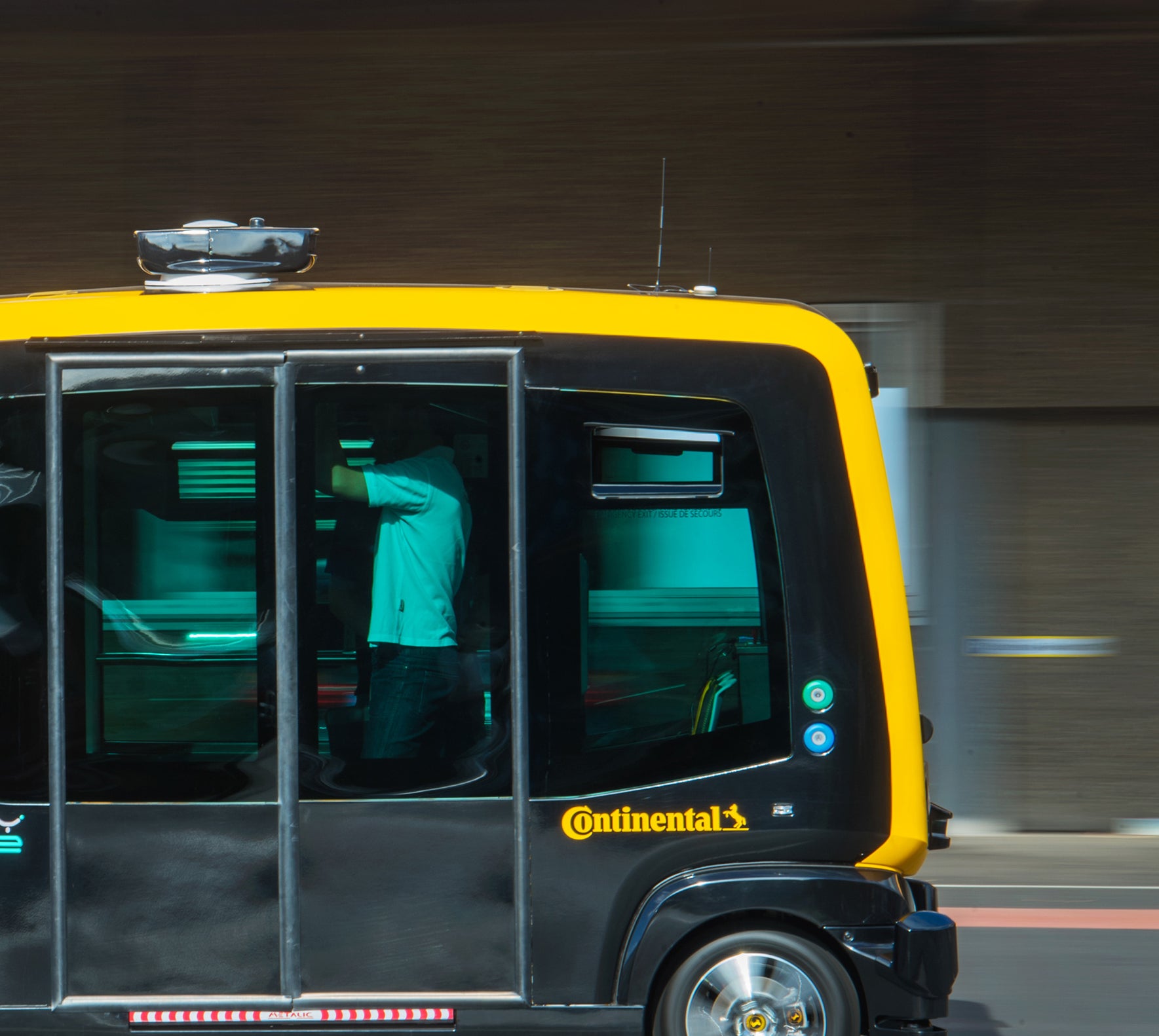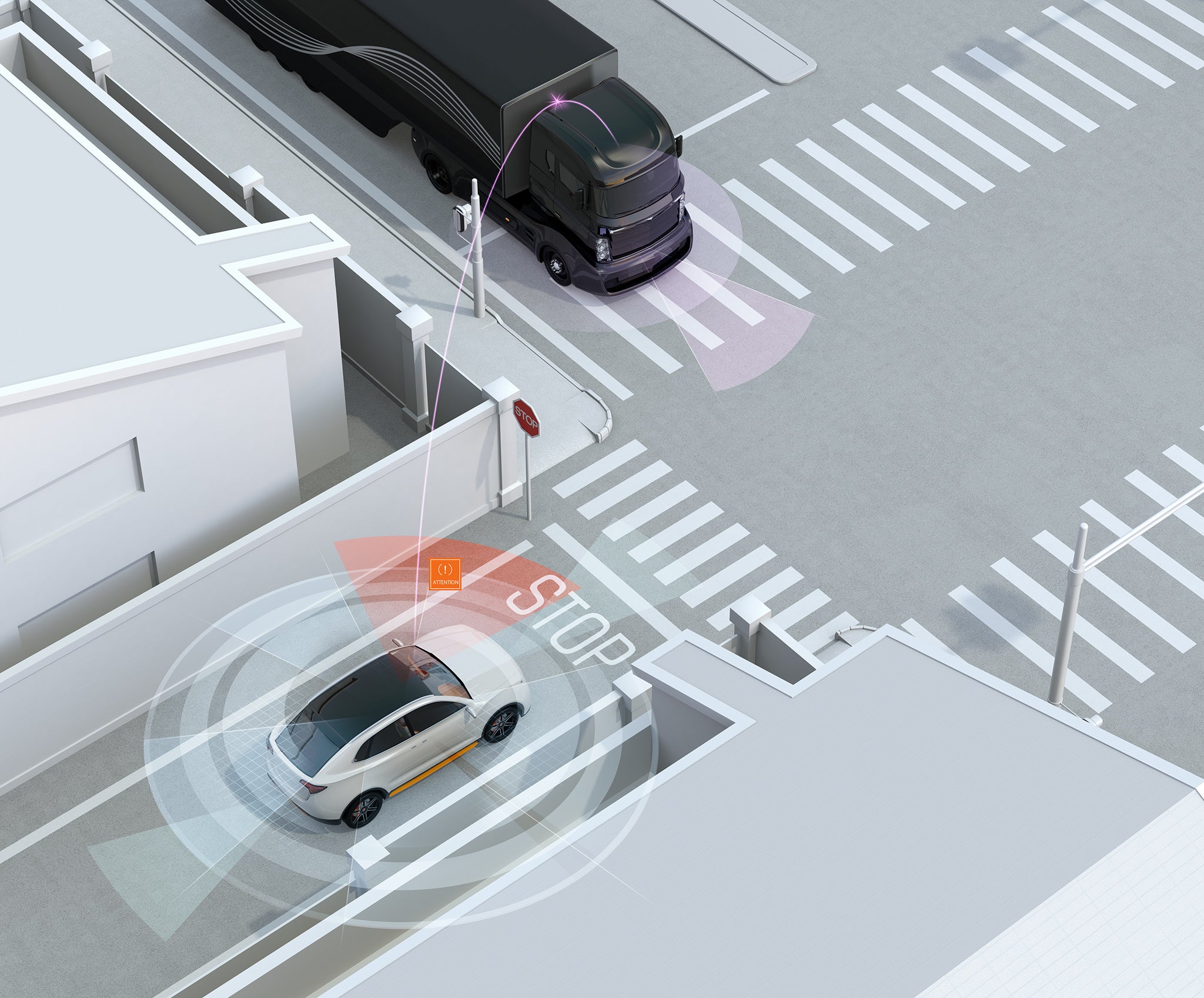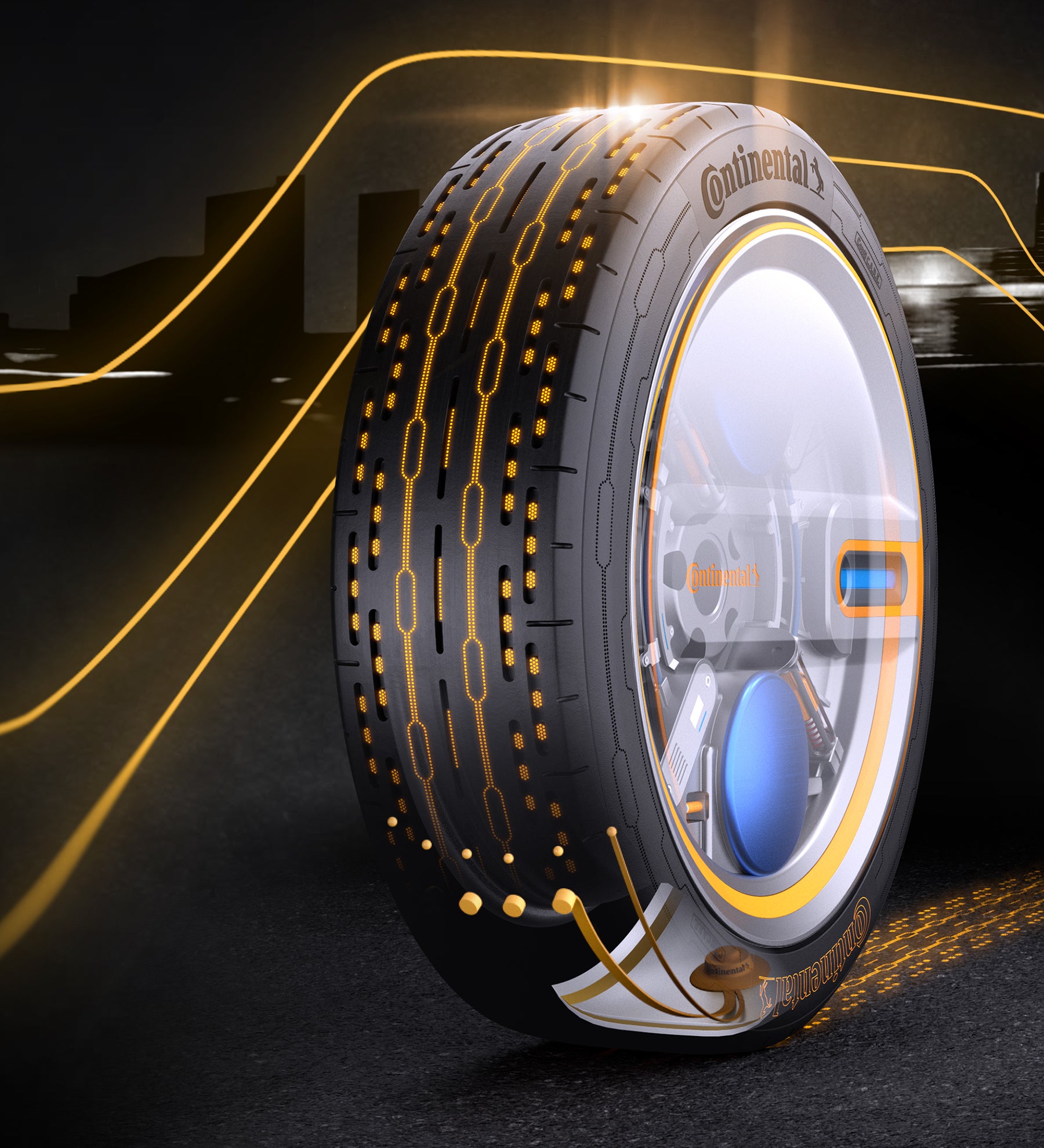
Visit Continental Tires in your country for local vehicle fitment
# Technology and Innovation
The tire of the future is connected
Intelligent tires matter, even if you don't own a car
Intelligent tires make life easier for you as a car owner by reducing maintenance efforts and costs. For you as a driver, they offer additional safety, peace of mind and efficiency, by eliminating unnecessary breakdowns and automatically optimizing tire pressure. However, the future of mobility will be determined by shared and autonomous vehicles. Ride-sharing and ride-hailing are increasing, assisting urban mobility as well as the transportation of goods and services. What if the owner and the driver of a car are not one and the same person? In shared vehicles, intelligent tires have to collect data in a way that serves both the interests of you, the driver, and those of the owners who operate a shared vehicle fleet.
Data-driven tire monitoring
- … improves vehicle fleet efficiency
- … reduces car-sharing cost and maintenance
- … minimizes energy use and reduce emissions
- … increases safety and convenience for end users
- … optimizes availability of consistently serviced cars
Find out why intelligent tires will be mobility more efficient, affordable and accessible
Imagine instantly finding a car in your area, driving to your next location, and then letting it autonomously drive itself to a nearby hub, where it can be repaired or recharged as quickly and efficiently as possible, before being picked up by the next driver. Such a system may no longer just be a bold vision – and connected tires will help it become a reality.
Autonomous fleet vehicles are on the rise
40 % of the mileage driven in Europe could be covered by autonomous vehicles in 2030.
Five trends transforming the Automotive Industry’, PwC Autofacts
Increase in freight transport in the EU by 2050
60%
Increase in passenger transport in the EU by 2050
42%
Carbon emissions from the EU by 2050, according to Paris agreement
0%
Automation can help meet climate goals while increasing traffic
As a driver, you mainly care about the availability, affordability and safety of shared vehicles. Fleet owners and operators want to reduce costs and increase use. Efficiency is the point where your interests as a driver and the interests of fleet owners intersect – and where you can join forces to lower carbon emissions caused by transport.
For shared car services to operate efficiently and effectively, they need to be on the road as much as possible, using only the necessary amount of resources. Networked fleet management software uses data from many sources, including a car’s connected tires, to make every ride and an entire fleet as efficient and safe as possible.

Cost-saving and emission reduction through vehicle tracking
ContiConnect™ contributes the data needed to optimize tire performance. The system gathers information from sensors in the wheels to remotely monitor each vehicle. Data points like temperature and pressure are collected, analyzed, and interpreted for the entire fleet. By remotely monitoring and evaluating data, as well as generating instant notifications of urgent alerts, ContiConnect™ can prevent tire-related breakdowns, so the vehicle stays on the road instead of in the workshop. Real-time status updates and alerts increase productivity, reduce maintenance requirements, and save costs.

Increased efficiency doesn’t just benefit owners; it also reduces costs for you. As AI fleet management systems are used more often, informed by ever-increasing amounts of data, their decision-making abilities will improve: they will take better routes to avoid traffic; predict hazards more accurately (for example, based on real-life weather conditions); and more effectively diagnose and resolve maintenance issues.
With vehicles effectively monitoring and fixing themselves, safety will increase. Slow leak detection, for example, prevents underinflated tires so that they are repaired before becoming an accident hazard. This is particularly important while you are driving a car, but don’t feel responsible for checking the tires or maintaining correct air pressure. With multiple users driving a shared vehicle on any given day, automated tire monitoring becomes more than just a convenient extra.
Data-driven optimization can also reduce emissions and manage smooth, fuel-efficient driving, thereby further enhancing the sustainability of entire fleets. In our collective hands, effective fleet tracking will be one of the keys to a successful future of shared mobility

